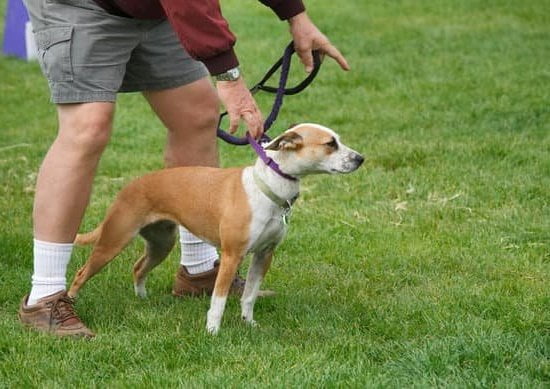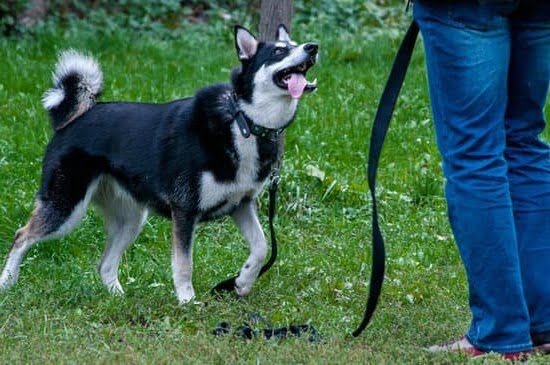Are you interested in learning how to train a search and rescue dog? Search and rescue dogs play a crucial role in locating missing persons in various situations.
From natural disasters to locating lost hikers, these well-trained canines are invaluable assets to search and rescue operations. In this article, we will explore the importance of training search and rescue dogs, understanding their characteristics, establishing basic obedience training, advanced training techniques, scent training and tracking, handling and communication, as well as real-life success stories of search and rescue dogs.
Search and rescue dogs are specially trained canines that work alongside human rescuers to locate missing individuals in different scenarios such as natural disasters or wilderness searches. The impact they have on saving lives cannot be understated, making their training an essential aspect of their role.
Training a search and rescue dog is not only important for the success of various missions but also for the safety of both the dog and the handler. Understanding the characteristics of these dogs is crucial to developing effective training methods that capitalize on their strengths. With proper training techniques, search and rescue dogs can become highly skilled at navigating through challenging terrains to locate individuals in need of assistance.
The Importance of Training a Search and Rescue Dog
Training a search and rescue dog is crucial for their success in locating missing persons and providing assistance in emergency situations. These highly skilled animals play a vital role in rescue operations, and proper training is essential to ensure their effectiveness in the field. The importance of training a search and rescue dog cannot be overstated, as their abilities can make all the difference in life-or-death scenarios.
There are several key reasons why training a search and rescue dog is so important:
1. Enhanced Efficiency: Proper training allows search and rescue dogs to work more efficiently, covering larger areas in shorter amounts of time. This can be especially important when time is of the essence, such as in natural disasters or missing person cases.
2. Safety: Well-trained search and rescue dogs are better equipped to navigate challenging terrain and detect hazards that may pose risks to human rescuers. Their ability to locate individuals quickly and accurately can also minimize the time spent in dangerous or high-risk environments.
3. Reliability: Training instills discipline and reliability in search and rescue dogs, ensuring that they can perform effectively even under stressful or unpredictable circumstances.
Training a search and rescue dog requires dedication, expertise, and an understanding of the unique qualities that make these animals well-suited for their roles. By following specialized training protocols, handlers can develop the skills necessary to harness a canine’s natural aptitude for scent tracking and searching, ultimately leading to successful outcomes in real-life rescue missions.
Understanding the Characteristics of a Search and Rescue Dog
Search and rescue dogs are highly trained animals that possess specific characteristics that make them well-suited for their important role. These dogs must not only have a keen sense of smell, but also excellent agility, intelligence, and stamina. In addition to these physical traits, search and rescue dogs must also be highly trainable and have a strong desire to work alongside their human handlers.
One of the most crucial characteristics of a search and rescue dog is their ability to remain focused in high-stress situations. These dogs are often deployed in emergency situations, such as natural disasters or missing persons cases, where they must continue their search despite loud noises, unfamiliar environments, and potentially dangerous conditions. This requires a level of mental toughness and resilience that not all dogs possess.
Furthermore, search and rescue dogs must also have a strong bond with their human handlers. This bond is essential for effective communication and teamwork between the dog and handler during search operations. It also allows the handler to trust the dog’s instincts and follow their cues. Establishing this bond requires consistent training and positive reinforcement techniques that build trust and respect between the dog and handler.
| Characteristics | Description |
|---|---|
| Keen sense of smell | Search and rescue dogs must have an exceptional sense of smell to detect human scents over long distances or under debris. |
| Mental toughness | These dogs need to remain focused in high-stress situations like natural disasters or missing persons cases. |
| Bond with handler | A strong bond with the human handler is essential for effective communication, teamwork, trust, and respect. |
Establishing Basic Obedience Training for Search and Rescue Dogs
Importance of Basic Obedience
Before delving into advanced search and rescue training techniques, it is crucial to establish a strong foundation of basic obedience for search and rescue dogs. Basic obedience training forms the building blocks for all further training and ensures that your dog responds promptly and reliably to commands in challenging search and rescue scenarios.
Key Components of Basic Obedience Training
The key components of basic obedience training for search and rescue dogs include teaching essential commands such as sit, stay, come, down, and heel. These commands form the basis for effective communication between the handler and the dog during search and rescue missions. Additionally, leash control, proper socialization with other humans and animals, as well as impulse control are also important aspects of basic obedience training.
Training Methods
Positive reinforcement-based training methods are highly effective in establishing basic obedience for search and rescue dogs. Rewards such as treats, praise, or play can be used to reinforce desired behaviors. Consistency, patience, and regular practice are also key factors in successful basic obedience training. Consistent practice sessions will help solidify the dog’s understanding of commands and ensure that they respond reliably in various environments.
By laying a strong foundation of basic obedience through positive reinforcement-based training methods, handlers can set their search and rescue dogs up for success in more complex search and rescue training scenarios. Through consistent practice and patience, handlers can cultivate the skills needed to effectively communicate with their canine partners in high-stakes situations.
Advanced Training Techniques for Search and Rescue Dogs
Agility Training
Agility training is an essential aspect of advanced training for search and rescue dogs. This type of training helps dogs navigate various terrains, obstacles, and challenging environments that they may encounter during search and rescue missions. Agility training not only improves a dog’s physical fitness but also enhances their problem-solving skills and confidence.
Water and Rope Rescue Training
In addition to agility training, search and rescue dogs need to be proficient in water and rope rescue techniques. This specialized training involves teaching dogs how to swim, maneuver through water currents, and perform successful rope-assisted rescues. These skills are crucial for search and rescue missions near bodies of water or in mountainous areas where ropes are needed for retrieval.
Nighttime Search Training
Search and rescue operations often occur regardless of the time of day. Therefore, advanced training for search and rescue dogs should include nighttime search exercises. This type of training focuses on teaching dogs how to use their senses effectively in low-light conditions, as well as familiarizing them with the use of night vision equipment. By simulating nighttime scenarios during training, handlers can ensure that their canine partners are prepared for any situation they may encounter during actual search missions.
These advanced training techniques go beyond basic obedience commands and lay the foundation for specialized skills required in real-life search and rescue operations. When implementing these techniques, handlers must prioritize safety, positive reinforcement, and consistent practice to ensure that their search and rescue dogs are fully prepared to respond effectively in emergency situations.
Scent Training and Tracking for Search and Rescue Dogs
Scent training and tracking are crucial aspects of the training process for search and rescue dogs. These skills allow the dogs to use their highly developed sense of smell to locate missing persons in various environments, including wilderness areas, urban settings, and disaster situations. To effectively train a search and rescue dog in scent training and tracking, handlers must understand the science behind the dog’s olfactory capabilities and implement specific training techniques to enhance these skills.
The first step in scent training is to understand how a dog’s sense of smell works. Dogs have up to 300 million olfactory receptors in their noses, compared to about 5-6 million in humans, which enables them to detect scents at incredibly low concentrations. This ability makes them invaluable assets in search and rescue operations.
To capitalize on this natural talent, handlers can begin by introducing the dog to various scents through games such as “find it” or hiding scented objects for the dog to locate. As the dog becomes proficient in identifying specific scents, the training can progress to more complex scenarios, including tracking human scent trails over different terrains.
In addition to basic scent recognition, search and rescue dogs need to be trained in advanced tracking techniques. This involves teaching the dog how to follow a specific human scent trail over long distances with distractions along the way. Handlers can employ methods such as “scent discrimination” exercises where multiple human scents are placed along a trail, requiring the dog to identify and follow the correct one.
By mastering these advanced tracking skills, search and rescue dogs can become proficient at locating missing individuals even under challenging circumstances. Understanding these principles is essential for anyone learning how to train a search and rescue dog effectively in scent training and tracking techniques.
Search and Rescue Dog Handling and Communication
Training a search and rescue dog is no small feat, and it requires careful handling and effective communication between the handler and the dog. Here are some key tips on how to handle and communicate with a search and rescue dog:
1. Communicate with Clear Signals: Search and rescue dogs rely heavily on their handler’s signals, both verbal and non-verbal. It’s important to establish clear communication cues so that the dog can understand what is being asked of them. This includes using consistent hand signals, voice commands, and body language to convey instructions.
2. Build Trust and Rapport: A strong bond between the handler and the search and rescue dog is crucial for success. Spend time bonding with the dog outside of training sessions to build trust and rapport. This will help create a deeper connection and understanding between the two of you when it comes time to work in real-life search situations.
3. Practice Effective Handling Techniques: Proper handling techniques are essential when working with a search and rescue dog. Handlers should be able to read their dog’s body language, anticipate their needs, and provide support in challenging environments. Understanding how to navigate different terrains, weather conditions, and obstacles while guiding the search and rescue dog is also crucial.
4. Maintain Positive Reinforcement: Just like in other aspects of training, positive reinforcement is key when handling a search and rescue dog. Rewarding the dog for correctly following commands or successfully completing tasks will motivate them to continue performing at their best.
By implementing these strategies for successful handling and communication with a search and rescue dog, handlers can effectively guide their canine partners during search operations while ensuring safety, efficiency, and ultimately increasing the likelihood of successful outcomes in finding missing persons or victims in emergency situations.
Real-Life Search and Rescue Dog Success Stories
Search and rescue dogs have played a crucial role in finding missing persons, disaster response, and other emergency situations. These highly trained canines have saved countless lives through their exceptional skills and unwavering dedication. Here are a few inspiring success stories of search and rescue dogs that showcase their incredible abilities and the impact they have had on people’s lives.
One remarkable success story is about a search and rescue dog named Hero, who located a young child who had gone missing in a heavily wooded area. Despite challenging terrain and inclement weather, Hero was able to track the child’s scent and lead the rescuers to the exact location where the child was found unharmed. This heartwarming story is just one example of how well-trained search and rescue dogs make a significant difference in life-threatening situations.
Another extraordinary instance of search and rescue dog success involves a dog named Kona, who played a pivotal role in locating survivors during a natural disaster. Kona’s exceptional scent tracking abilities enabled her to locate individuals trapped under rubble, ultimately saving their lives. The tireless efforts of Kona and her handler exemplify the sheer determination and effectiveness of search and rescue dogs in critical situations.
These real-life success stories underscore the invaluable role that well-trained search and rescue dogs play in emergency response efforts. Their ability to locate missing individuals, navigate treacherous terrains, and provide comfort to those in distress is nothing short of extraordinary. As such, it is evident that training these remarkable animals is essential for ensuring they are well-prepared to tackle any challenge that comes their way.
| Search and Rescue Dog | Success Story |
|---|---|
| Hero | Located missing child in woods |
| Kona | Found survivors during natural disaster |
Conclusion
In conclusion, the impact of well-trained search and rescue dogs cannot be overstated. These remarkable animals play an essential role in saving lives, often in the most challenging and dangerous situations. Through rigorous training and development of specialized skills, search and rescue dogs become invaluable assets to emergency response teams, law enforcement agencies, and disaster relief organizations.
The process of training a search and rescue dog is complex and demanding, requiring a deep understanding of the dog’s natural abilities and instincts. It involves extensive obedience training, advanced techniques for scent detection and tracking, as well as effective communication between handler and dog. The dedication and commitment of both the handlers and the dogs are crucial in achieving success in search and rescue missions.
For anyone interested in learning how to train a search and rescue dog, it is important to recognize that this is a highly specialized field that requires expertise and experience. Enlisting in professional training programs or working with experienced search and rescue dog handlers is essential for gaining the necessary knowledge and skills.
Furthermore, ongoing education and continuous practice are vital to maintaining proficiency in search and rescue dog training. The impact of a well-trained search and rescue dog on saving lives is immeasurable, making their training an invaluable investment for any community or organization involved in emergency response efforts.
Frequently Asked Questions
Can You Train Your Own Search and Rescue Dog?
Training your own search and rescue dog is possible, but it requires a lot of dedication, time, and effort. It’s important to start with a dog that has the right temperament and work with professional trainers to learn the necessary skills.
What Methods Are Used to Train Search and Rescue Dogs?
Search and rescue dogs are trained using positive reinforcement methods such as food rewards, toys, or verbal praise. They are taught to track scents, locate hidden individuals, and effectively communicate their findings to their handler.
What Are the Commands for Search and Rescue Dogs?
Some common commands for search and rescue dogs include “find,” which directs the dog to search for a person, “alert,” which signals that the dog has found someone, and “stay,” to ensure they don’t disturb any evidence or compromise a search area. These commands are fundamental in training these dogs for their important work.

Welcome to the blog! I am a professional dog trainer and have been working with dogs for many years. In this blog, I will be discussing various topics related to dog training, including tips, tricks, and advice. I hope you find this information helpful and informative. Thanks for reading!





